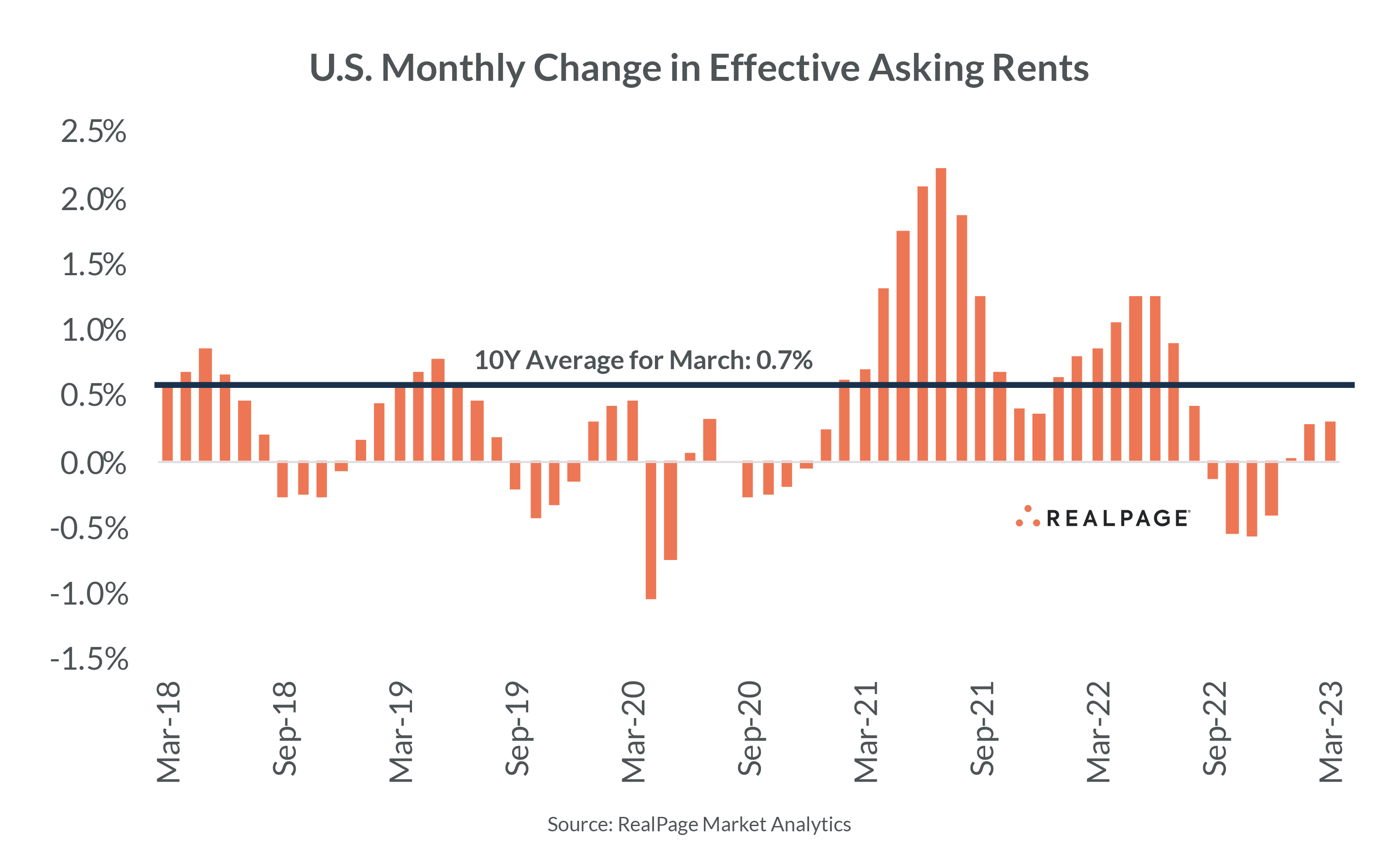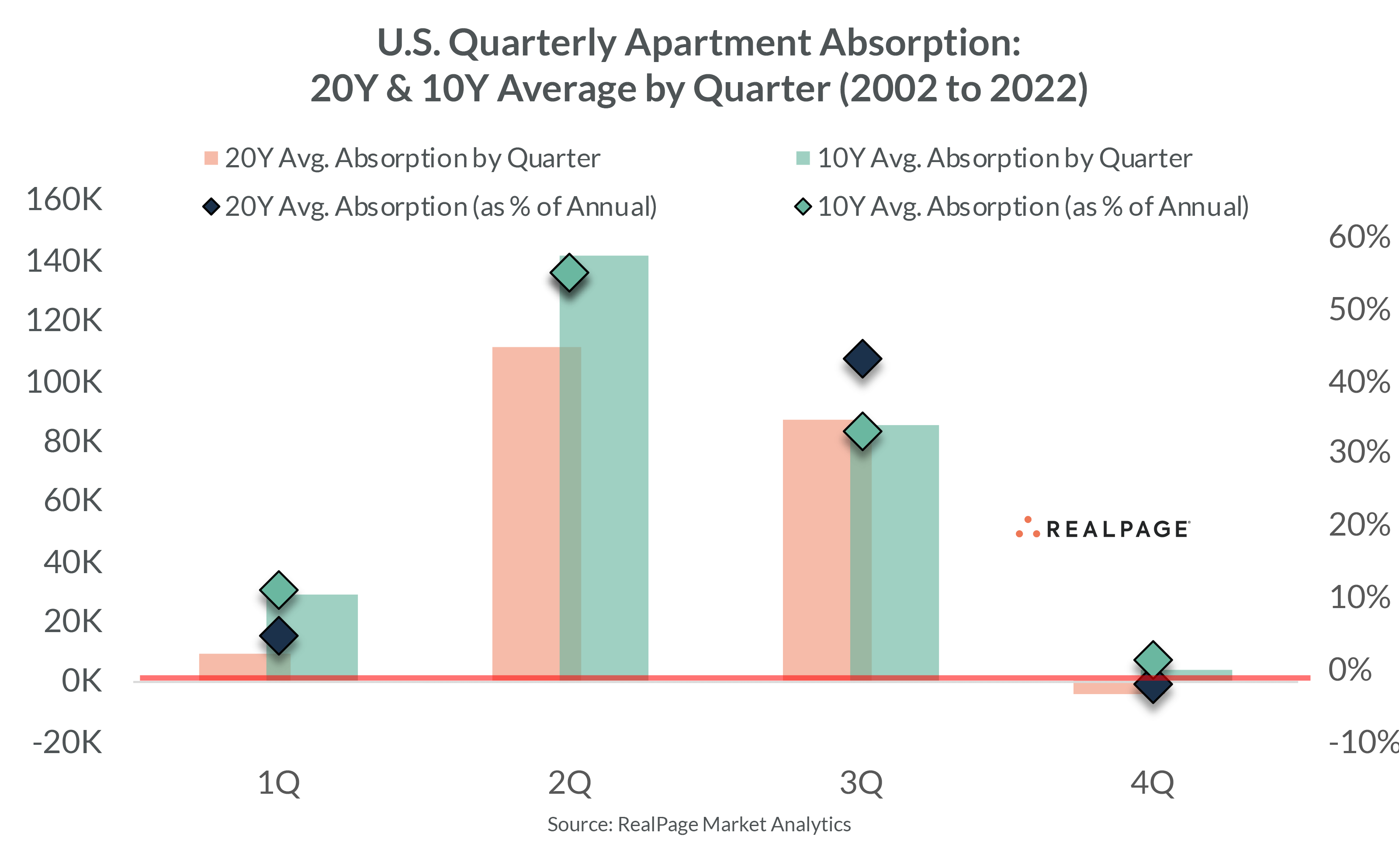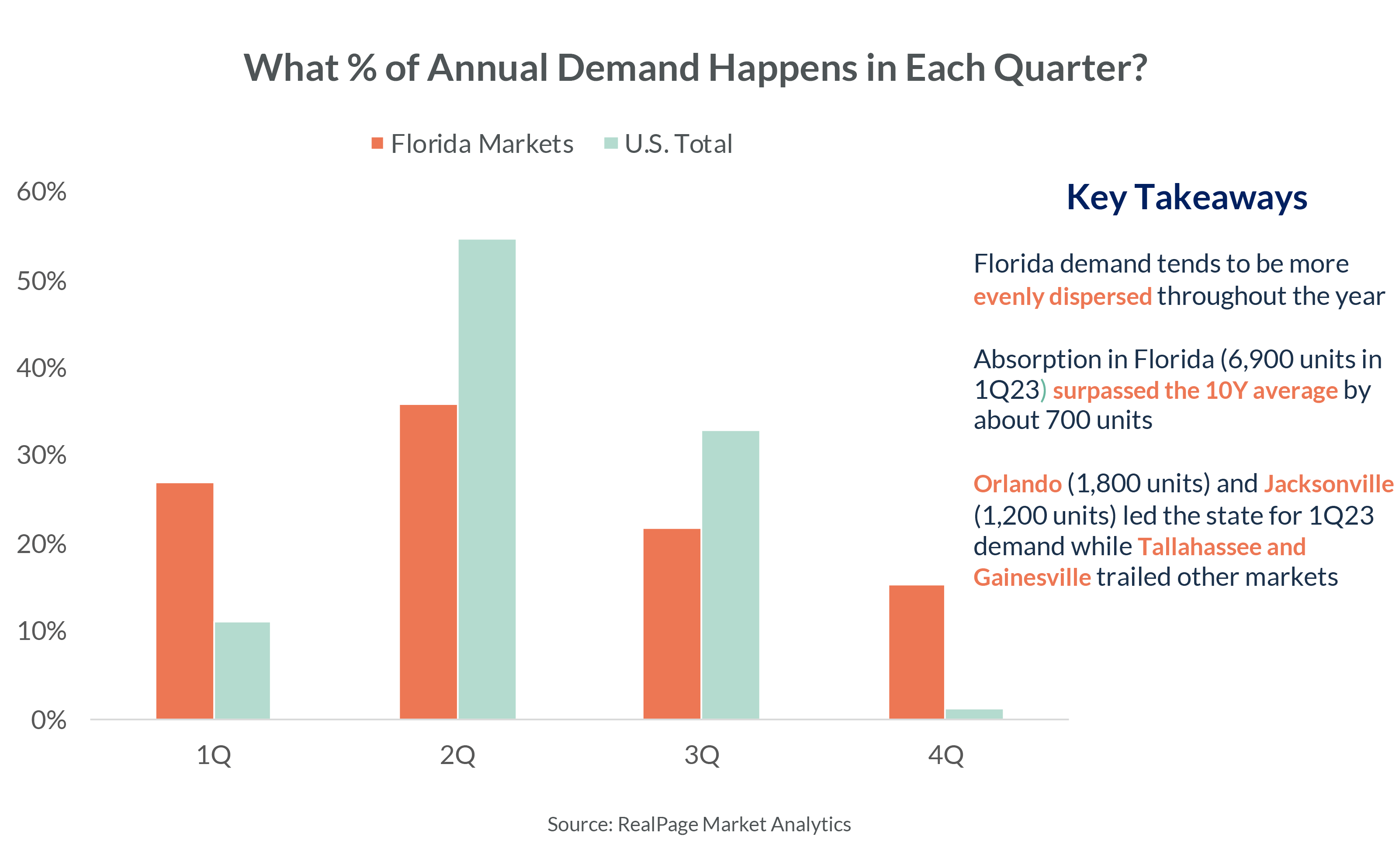Reframing 1st Quarter’s Performance Into Historical Perspective

With 1st quarter 2023 in the books, it can be a little difficult to get a full gauge of apartment market performance. Encouraging metrics can certainly be found. For one thing, 1st quarter 2023 saw the U.S. record its first positive quarterly absorption figure (19,243 units) since 1st quarter 2022.
For another thing, rents grew on a month-over-month basis in February and March, marking the first two-month stretch of rent growth since August 2022. Further, March’s monthly hike of 0.3% was the largest monthly rent increase since August 2022, accoding to data from RealPage Market Analytics.
Still, those positives are countered by some weak stats. For instance, 1st quarter 2023 absorption for about 19,000 units was less than the average 1st quarter figure from the past 10 years. In the 2010s decade, 1st quarter absorption averaged nearly 30,000 units – so 2023’s 1st quarter shortfall comes in around two-thirds of the typical figure. Similarly, monthly rent growth in March 2023 was about 40 basis points weaker than the recent average March figure (0.7%).
It seems then that the 1st quarter results come down to a matter of perspective. An optimist may suggest that any positive movement should be seen as a win, while a pessimist can equally point towards relative underperformance in the 1st quarter stats.
Regardless of perspective, though, it’s crucial to consider the relatively small weight that 1st quarter stats carry through a full calendar year. While 1st quarter makes up 25% of the calendar year, it makes up only a fraction of total leasing activity.
Over the past 10 years, 1st quarter usually accounts for 10% of annual absorption figure. A 20-year view shows that 1st quarter makes up a smaller portion, with only 5% of annual demand happening between January and March.
Further, effectively zero net absorption happens during the holiday months between October and December.
While 1st quarter still makes up a tiny portion of the total, there has been a modest shift in absorption trends towards 1st quarter, which has detracted from 3rd quarter absorption figures. In the past 20 years, 3rd quarter absorption made up about 43% of all leasing activity. In the past 10 years, that figure dropped to about 30%.
Nevertheless, the clear peak of the leasing season comes in 2nd quarter, with more than half of all leasing activity occurring between April and June. In other words, a better barometer of 2023 will come in the next 60 days.
As is the case with any national trend, there are exceptions to be found. One of the more noteworthy exceptions are markets that experience some counter-cyclicality, such as college towns, which skew more heavily toward an academic calendar of leasing. Other examples of counter-cyclical markets are in warmer parts of the country and in Florida, in particular, where so-called snowbirds affect leasing conditions.
Though market-specific differences vary, Florida’s typical leasing calendar shows a more well-rounded scope of leasing. In Florida, the 2nd quarter leasing makes up just 35% of the annual versus the 50%+ at the national level. And 4th quarter leasing makes up about 15% of annual absorption in Florida, compared to effectively 0% nationally.
Most markets rarely see peak leasing activity between January and March, but it is possible. Those markets include McAllen/Brownsville, Naples, West Palm Beach, Cape Coral/Fort Myers and Sarasota.
From that perspective, perhaps 1st quarter stats highlight broader market direction in very specific, nuanced instances. But at the national level, focus more closely on 2nd quarter (and to a lesser degree, 3rd quarter, as that’s an important time for budgeting) as the source of market direction.









